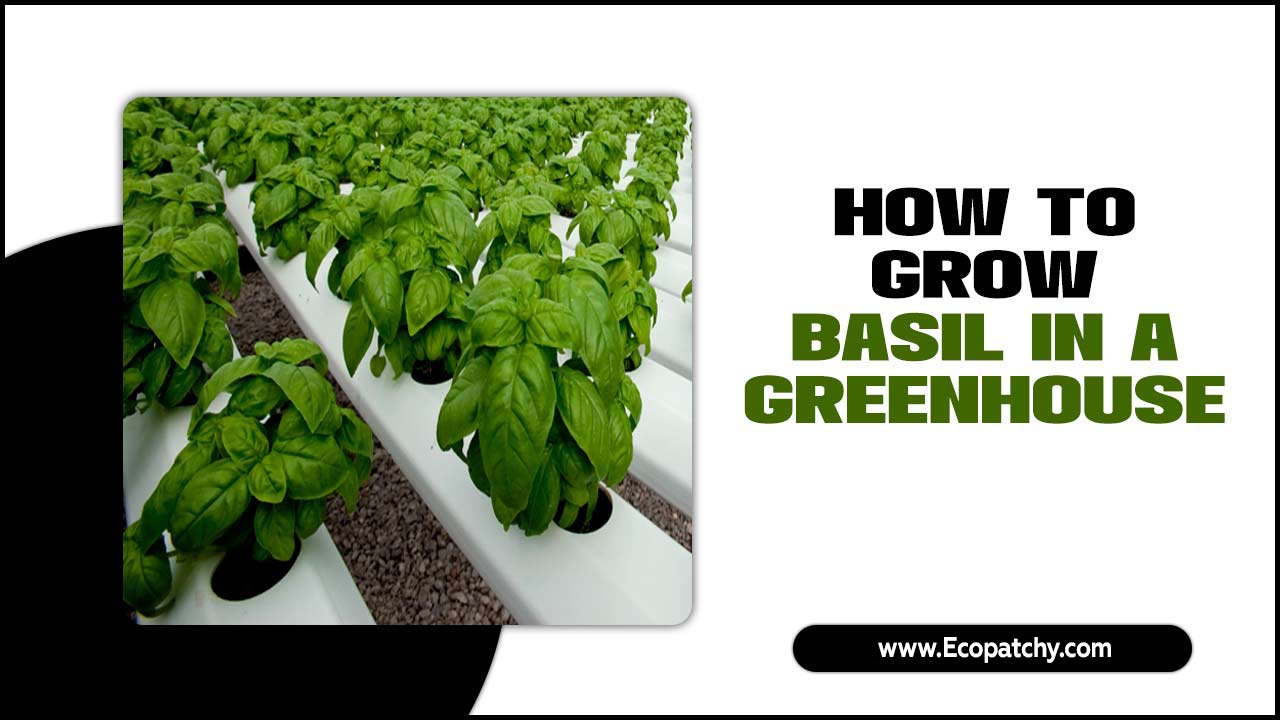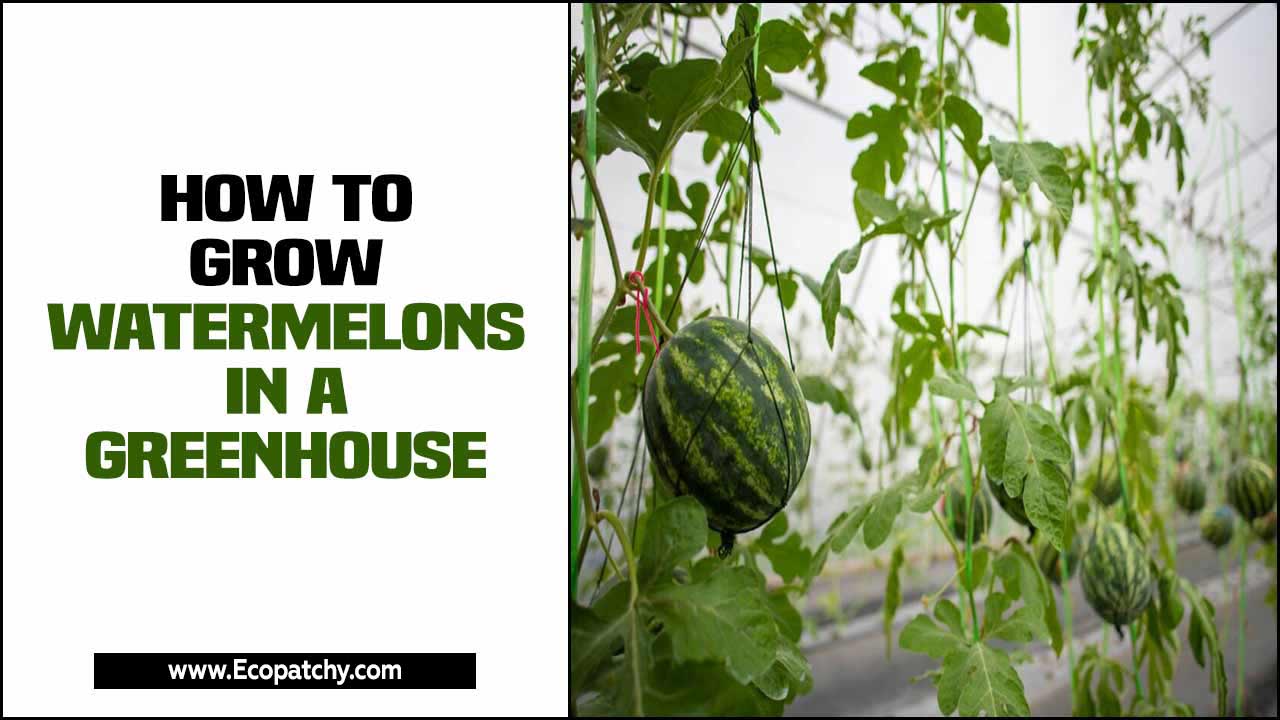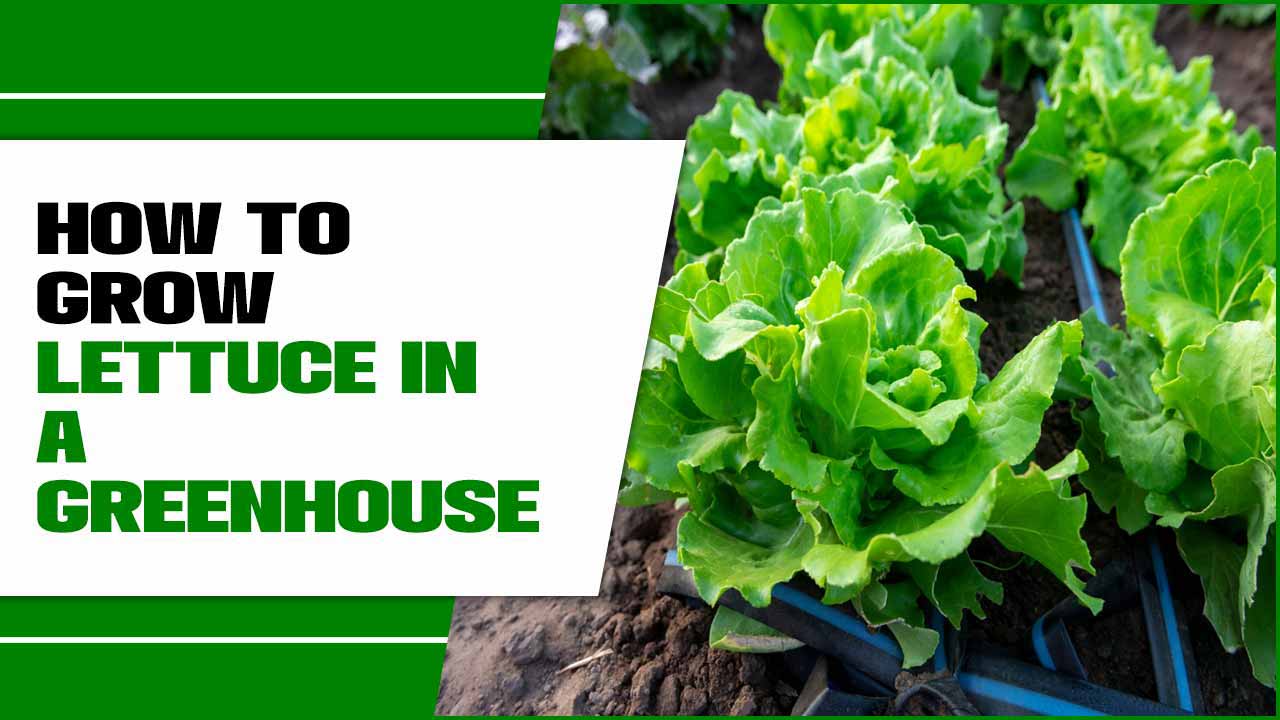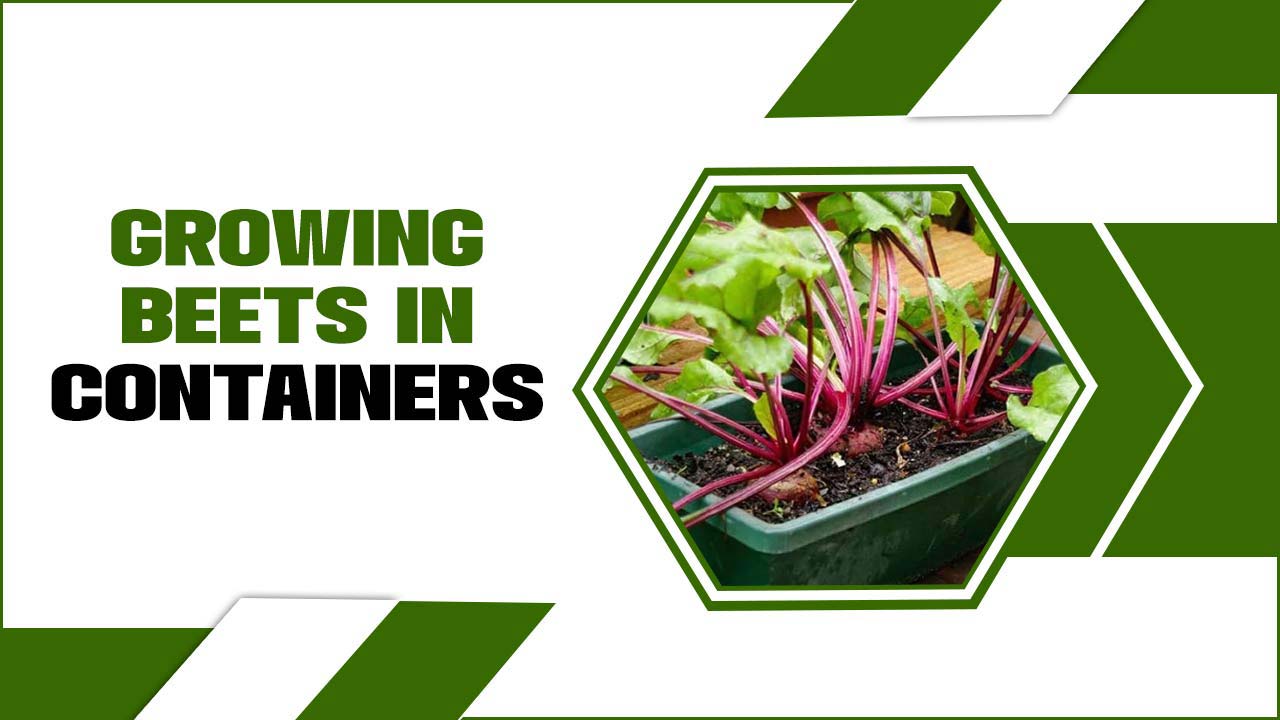Greenhouses have become increasingly popular in recent years for their ability to extend the growing season and provide a controlled environment for plants. Among the various vegetables that can thrive in a greenhouse, beets are a nutritious and versatile option.
These root vegetables not only add a pop of colour to any dish, but they also offer a plethora of health benefits. However, growing beets in a greenhouse requires proper planning and care.
Here, we will discuss how to grow beets in a greenhouse, including the ideal growing conditions, suitable varieties, and best practices for a successful harvest. Whether you are a seasoned greenhouse gardener or just starting, we will provide the information to produce your own delicious and nutritious beets year-round.

6 Easy Tips On How To Grow Beets In A Greenhouse
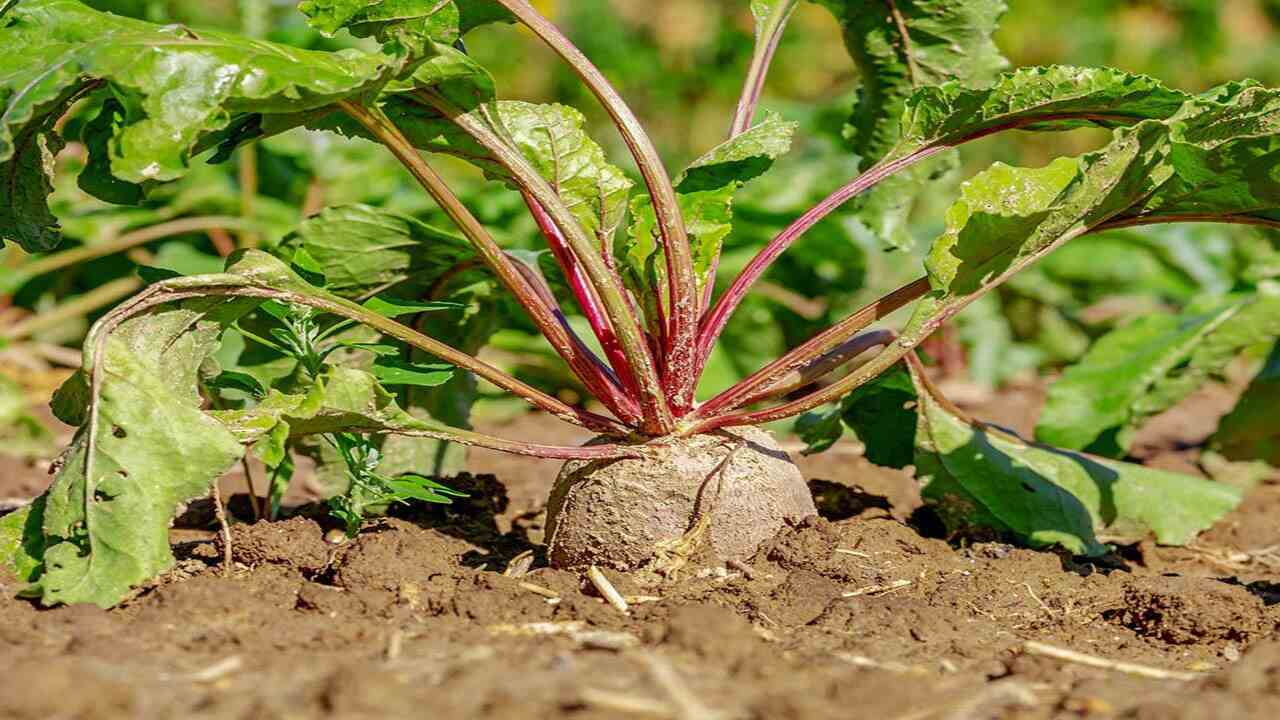
The cultivation of beets in a greenhouse environment has gained increasing attention in recent years as growers seek to maximize crop yield and quality while minimizing potential risks associated with traditional field production.
The controlled conditions offered by a greenhouse setting allow for greater management of factors such as temperature, light, humidity, and nutrient levels, thereby providing optimal growing conditions for beets.
One of the primary advantages of growing beets in a greenhouse is extending the growing season. With the ability to control the climate, growers can plant beets earlier in the year and continue production well into the cooler months. This not only ensures a steady and constant supply of beets but also enables growers to meet market demands throughout the year.
Here are six tips on how to grow beets in a greenhouse:
1.Choose The Right Beet Variety
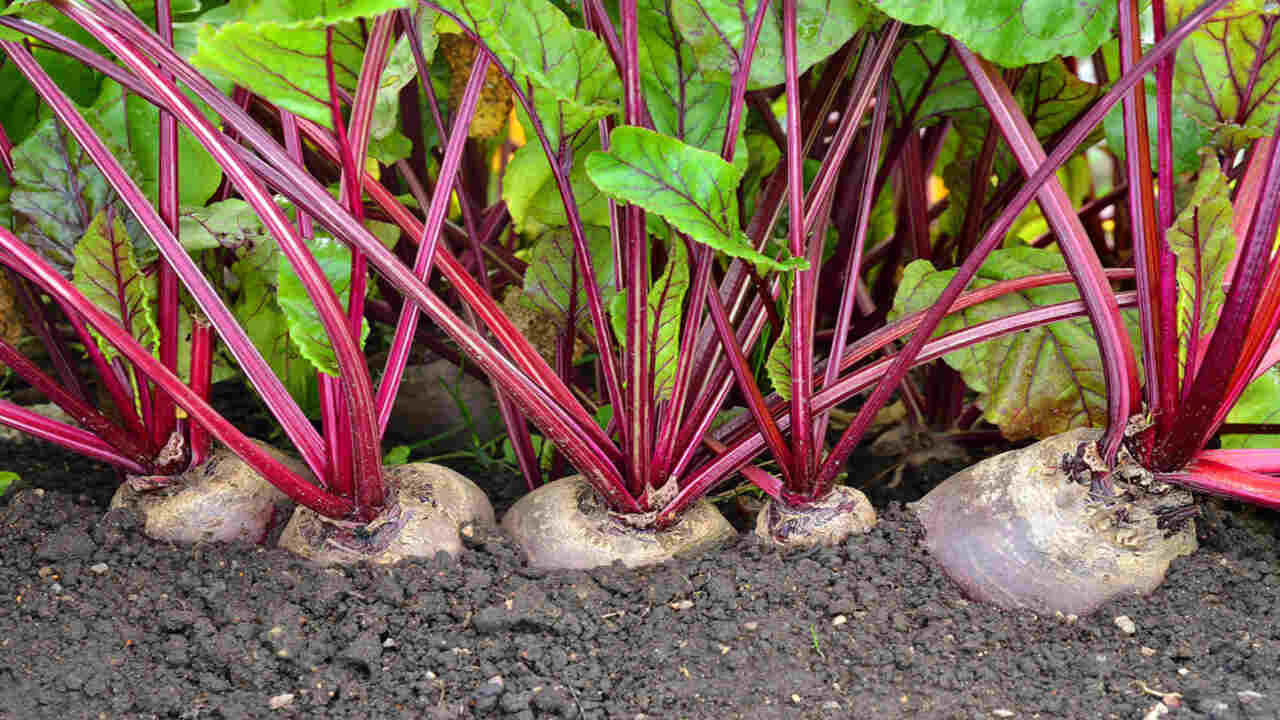
It is important to consider certain factors that can affect the success of your crop. One such factor is the size of the beet. Mini or baby beets are particularly suitable for greenhouse cultivation due to their compact size and ability to grow in a controlled environment. These smaller varieties require less space and have a shorter growing period than larger beets. It is making them ideal for greenhouse settings where space may be limited.
In addition to size, it is also crucial to select beet varieties known for their adaptability to greenhouse conditions. Certain varieties have been specifically bred to thrive in controlled environments. It is making them more resistant to common issues such as temperature fluctuations and humidity.
2.Prepare The Soil
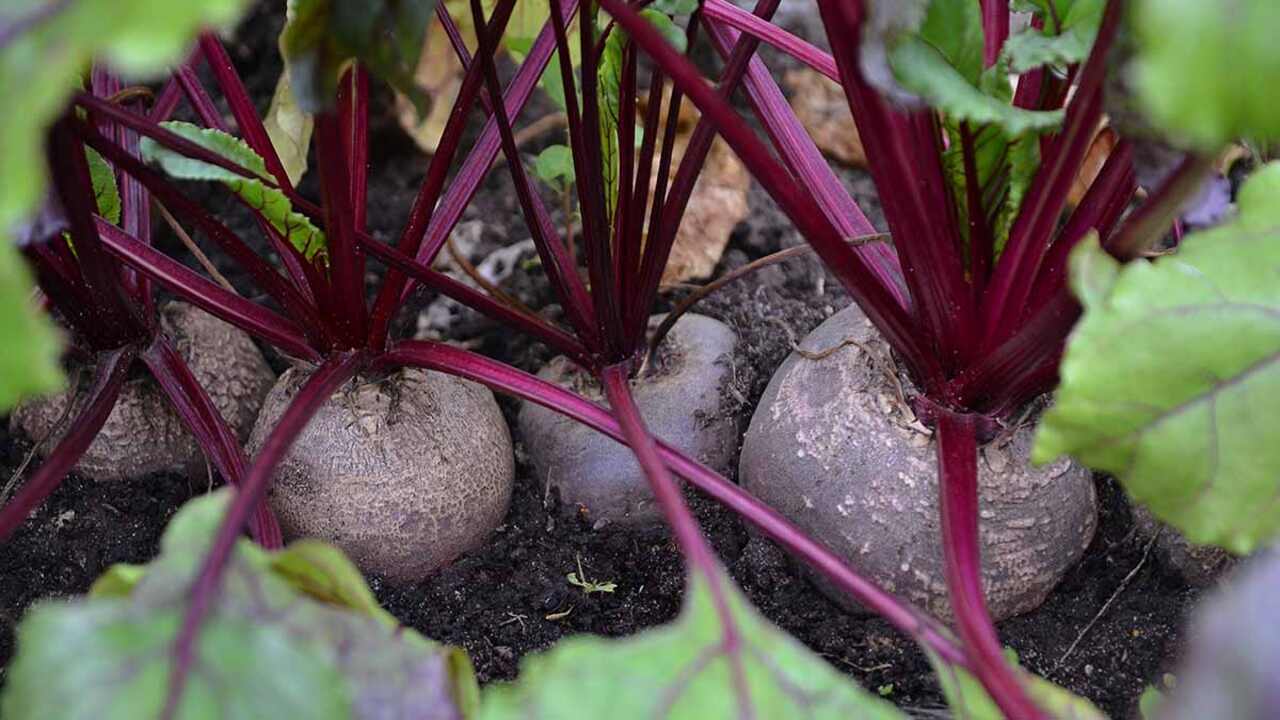
It is crucial to pay attention to the soil quality and composition. Beets thrive in loose, well-draining soil that allows their roots to penetrate easily and access nutrients. To achieve this optimal soil structure, it is recommended to incorporate organic matter into the soil.
One effective way to do this is by adding compost, a nutrient-rich material composed of decomposed organic matter. Compost not only improves the overall texture of the soil, making it loose and crumbly but also enhances its drainage capabilities, preventing waterlogging and potential root rot. Additionally, the organic matter in compost gradually releases essential nutrients, promoting healthy beet growth and development.
3.Start Seeds Indoors
Starting seeds indoors is a crucial step in establishing a successful beet crop. By sowing beet seeds in seed trays or pots indoors, gardeners have greater control over the growing conditions and can provide optimal care for the young seedlings. This practice is typically initiated 4-6 weeks before the anticipated date of the last frost, ensuring that the best plants have a significant head start before being transplanted into the greenhouse or garden.
Indoor seed starting offers numerous advantages for beet cultivation. Firstly, it allows for an extended growing season, particularly in regions with shorter growing periods or unpredictable weather patterns.
4.Transplant Seedlings
Transplanting seedlings is a crucial step in the cultivation of beets. As the seedlings reach a height of a few inches, it becomes necessary to transfer them into a controlled environment such as a greenhouse.
This relocation allows optimal growth conditions and ensures the beets have enough space to develop and thrive. Proper spacing is an essential consideration during the transplantation process, as overcrowding can impede the plants’ growth and lead to competition for resources.
When transplanting the seedlings, it is important to select an appropriate location within the greenhouse carefully. Factors such as sunlight exposure, temperature, and ventilation should be considered.
5.Provide Appropriate Temperature And Lighting
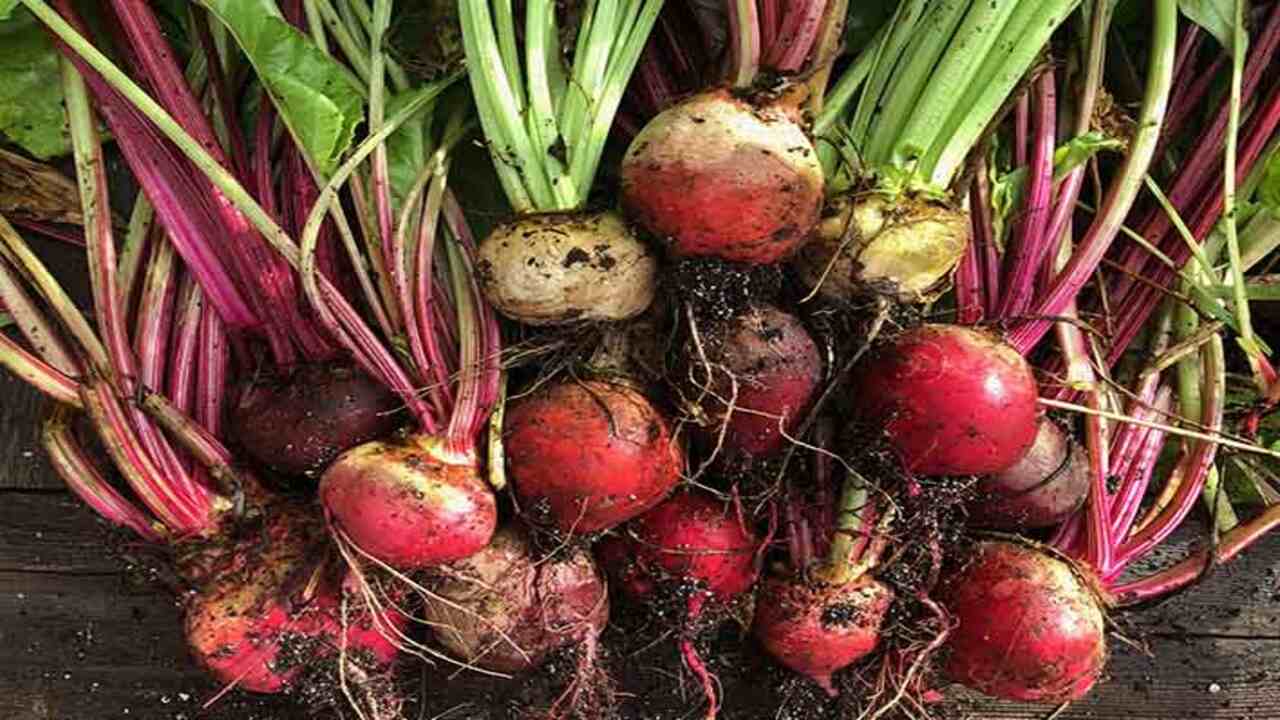
To ensure optimal growth and development of beets, it is crucial to provide appropriate temperature and lighting conditions. Beets thrive in temperatures ranging from 60 to 70°F (15 to 21°C), as this range promotes healthy root development and overall plant vigour. Therefore, it is essential to maintain the greenhouse environment within this temperature range, especially during the crucial stages of germination and early growth.
In addition to temperature, lighting plays a significant role in cultivating beets. While beets can grow in partial shade, they generally require a minimum of six hours of direct sunlight daily to thrive. In greenhouse settings, where natural sunlight may be limited or insufficient, it becomes necessary to supplement with artificial lighting.
6.Water Consistently
Water is an essential resource for all life forms, playing a crucial role in sustaining ecosystems, supporting agricultural practices, and ensuring human well-being. Consistent access to clean and safe water is vital for maintaining a healthy environment and promoting sustainable development. However, the increasing global population, climate change, and industrial activities have strained water resources, leading to water scarcity in many regions.
To address this issue, it is imperative to implement effective water management strategies that focus on ensuring a consistent water supply. This can be achieved through a combination of conservation efforts, such as efficient irrigation techniques reducing water wastage and the development of infrastructure for water storage and distribution.
Controlling Pests And Diseases In The Greenhouse
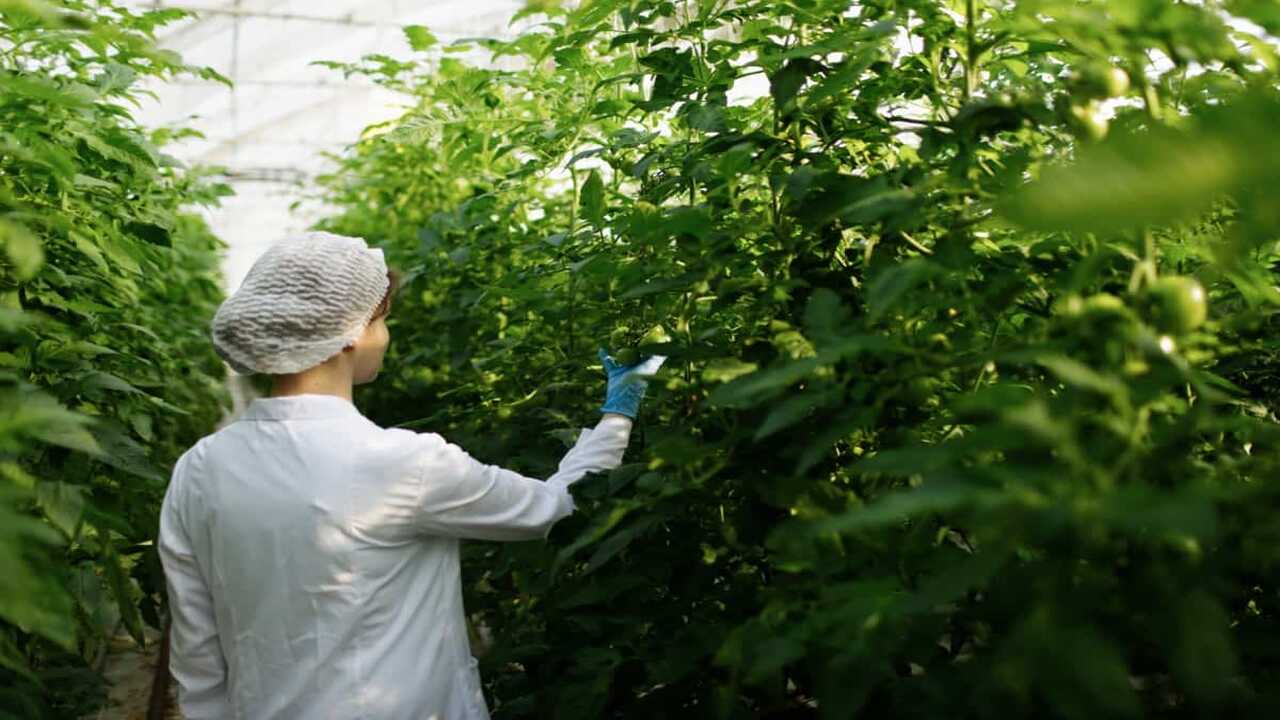
Controlling pests and diseases in the greenhouse is a crucial aspect of maintaining healthy plant growth and productivity. The greenhouse environment, with its controlled temperature and humidity levels, provides an ideal breeding ground for various pests and diseases. Therefore, implementing effective strategies to prevent and manage these issues is paramount in greenhouse management.
- Regularly inspect plants for signs of pests or diseases
- Implement good sanitation practices to prevent the spread of pests and diseases
- Use physical barriers such as insect nets or screens to keep pests out
- Introduce beneficial insects or predators to control pests naturally
- Practice crop rotation to minimize pest and disease buildup
- Monitor and control humidity levels to prevent fungal diseases
- Properly space and prune plants to improve air circulation and reduce disease risk
- Use organic or chemical pesticides as a last resort, following proper application guidelines
Monitoring And Maintaining Ideal Temperature And Humidity Levels

Monitoring and maintaining ideal temperature and humidity levels is of utmost importance in various industries and settings, from food storage and manufacturing to hospital environments and art preservation. The significance of ensuring optimal conditions stems from the fact that temperature and humidity can directly impact the quality, safety, and longevity of valuable assets, products, and human health.
- Regularly monitor temperature and humidity levels in the greenhouse.
- Use a thermometer to measure and adjust the temperature accordingly.
- Ensure proper ventilation to prevent overheating and maintain air circulation.
- Install shade cloth or use ventilation systems to regulate temperature during hot days.
- Monitor and maintain humidity levels between 50% and 70% for optimal beet growth.
- Use a hygrometer to measure humidity and adjust it using misting or watering techniques.
- Prevent excessive moisture buildup by providing proper drainage and avoiding overwatering.
- Regularly inspect the greenhouse for any leaks or gaps that may affect temperature and humidity levels.
- Consider using a greenhouse automation system to monitor and maintain ideal temperature and humidity levels consistently.
Harvesting And Storing Beets From The Greenhouse
This academic paragraph aims to discuss the process of harvesting and storing beets from a greenhouse. Beets, also known as Beta vulgaris, are a popular vegetable crop grown in greenhouses due to their adaptability to controlled environments. Harvesting and storing beets from a greenhouse is crucial in maintaining their quality and extending their shelf life.
Harvesting beets from the greenhouse:
- Begin harvesting beets when they reach a desirable size, usually around 1-2 inches in diameter.
- Gently loosen the soil around the base of the beet to avoid damaging the roots.
- Grasp the beet by its leaves or stem and carefully pull it from the ground.
- Trim off any excess leaves, leaving about an inch of the stem attached to the beet.
- Brush off excess soil from the beet, but avoid washing it, as this can shorten its storage life.
Storing beets from the greenhouse:
- Remove any damaged or diseased beets before storing.
- Trim off the greens, leaving about an inch of the stem attached to the beet.
- Store beets in a cool and dark place, such as a root cellar or refrigerator.
Troubleshooting Common Issues In Greenhouse Beet Cultivation
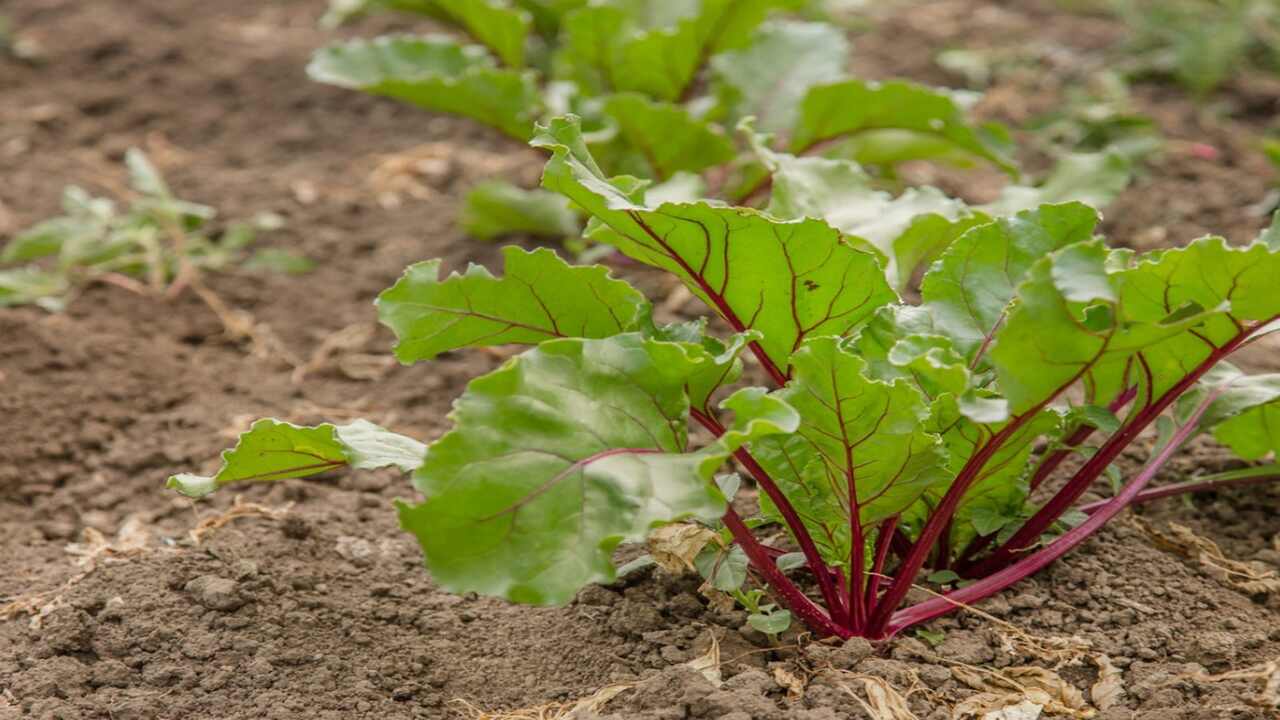
Greenhouse beet cultivation has gained significant attention in recent years due to its potential to provide a controlled environment for year-round production. However, like any agricultural practice, it is not exempt from encountering various challenges. In this article, we will discuss the common issues faced in greenhouse beet cultivation and explore potential troubleshooting strategies to mitigate these problems.
- Yellowing Or Wilting Leaves: This could indicate over or under-watering, nutrient deficiencies, or pest infestations. Check the soil moisture levels, adjust watering accordingly, and inspect for signs of pests.
- Slow Growth Or Stunted Plants: Inadequate sunlight, low temperatures, or poor soil quality may be causing these issues. Ensure the greenhouse provides enough light, maintains suitable temperature levels, and consider testing and improving the soil’s nutrient content.
- Leaf Spots Or Discolouration: Fungal or bacterial diseases can manifest as spots or discolouration on the leaves. Remove affected leaves and treat them with appropriate fungicides or bactericides.
- Bolting (Premature Flowering): High temperatures, overcrowding, or inadequate nutrient levels can cause beets to bolt. Maintain optimal temperature conditions, provide sufficient spacing between plants, and ensure proper nutrient supply.
Conclusion
Growing beets in a greenhouse can be a rewarding and efficient way to cultivate this versatile root vegetable. By utilizing proper temperature and light control, as well as providing adequate nutrients and water, beets can thrive in a protected greenhouse environment.
With the knowledge and techniques outlined in how to grow beets in a greenhouse, greenhouse growers can successfully produce a bountiful crop of beets, adding a nutritious and flavorful element to their gardening endeavours.
As with any form of agriculture, experimentation and adaptation may be necessary to find the best methods for individual growing conditions. However, by following these steps and remaining diligent in their care, greenhouse-grown beets can be a valuable addition to any garden.
FAQs
1.What Type Of Soil Is Best For Growing Beets In A Greenhouse?
Ans: The best type of soil for growing beets in a greenhouse is a well-draining, loamy soil that is rich in organic matter. Beets thrive in soil that is loose and crumbly, allowing their roots to penetrate and access nutrients easily.
The soil should also have a slightly acidic to neutral pH level, ideally between 6.0 and 7.5. Adequate moisture retention is important, so the soil should retain water well without becoming waterlogged.
2.How Much Water Should Beets Receive While Growing?
Ans: Beets generally require about 1 inch of water per week while growing. It is important to keep the soil consistently moist but not soggy, as excessive moisture can cause rotting. Regularly monitoring the soil moisture levels and adjusting watering accordingly is crucial to ensure optimal growth and prevent drought stress or overwatering issues.
3.How Long Does It Take For Beets To Reach Maturity In A Greenhouse?
Ans: Beets generally take 55-70 days to reach maturity in a greenhouse. However, the specific time can vary depending on the variety of beet being grown, the growing conditions in the greenhouse, and the desired size of the beets at harvest. It is important to regularly monitor the beets and harvest them when they have reached the desired size and maturity for optimal taste and texture.
4.What Temperature Range Is Ideal For Growing Beets In A Greenhouse?
Ans: The ideal temperature range for growing beets in a greenhouse is between 55°F and 75°F (13°C and 24°C).
5.What Type Of Fertilizer Should Be Used For Growing Beets In A Greenhouse?
Ans: A balanced fertilizer with a ratio of nitrogen, phosphorus, and potassium (NPK) of 10-10-10 or similar would be suitable for growing beets in a greenhouse. Additionally, it is important to provide adequate amounts of micronutrients such as iron, manganese, and boron, which are essential for proper beet growth.

